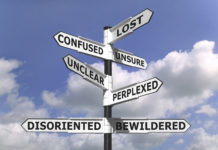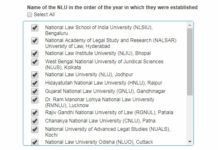The Indian Bureaucracy.
It is very hard to comprehend what the bureaucracy is. Some people think that the clerks they see in government offices are bureaucrats others are of the opinion that they are just the people who run the country.
So what exactly is this creature?
The bureaucracy is basically the executive officers of the government who are permanent officials entrusted with the continued running of the government irrespective of the political dispensation in power. It is comprised of civil servants who are generally classified into two broad categories, i.e. the generalist bureaucracy and the technocracy. The upper echelons of the bureaucracy are involved in key decision making and are the actual people who run the government. In most practical situations they mould the opinions and views of the ministers and have their way in most cases. The civil service is a vast complex structure and is a mammoth organization that usually exists to serve itself. It is no doubt a body that ensures stability and structure to continue governance of the country but also seeks to implement what it thinks in its own wisdom is in ‘public interest’ after all they fancy themselves as ‘public servants’. The higher services are the Group A services in India followed by Group B services and the State Civil Services. All India Services are only 3 in number (excluding the Indian Foreign Service). They are the Indian Administrative Service, Indian Police Service and the Indian Forest Service. All the civil servants in this country are controlled by a central department, styled the DoPT (Department of Personnel and Training).
The entry to these services is through the Civil Services Exam conducted by the Union Public Service Commission, New Delhi. It is a brilliant career option especially after law school, given the skill sets that you acquire therein. The origins lie in the ICS or Indian Civil Service that was established by the British to administer their imperial colony of India. The first such service was the BCS or the Bengal Civil Service. The ICS was considered the ‘steel frame of Indian administration’ and over the years it has rusted a lot but steel the glamour of the service has not worn away completely and surely is a very exciting career path after one’s stint at law school which also ensures ample time to prepare for this taxing exam. The first ICS officer of Indian origin was Sir Surendranath Banerjea (there… a little GK dose as well!!!) Every department is headed by a Secretary who is the executive and civil service head of that department. He reports to the minister in charge of that department who is the political head of the department/ministry.
Other ranks include Special Secretary, Joint Secretary etc. Each state is headed by a Chief Secretary who corresponds to the civil service equivalent of the Chief Minister and at the Central Level there is the Cabinet Secretary who doubles up as the ‘PM behind the scenes’. These bureaucrats are governed by provisions in the constitution as well as various legislations framed from time to time. Important bureaucrats of present day:
Cabinet Secy: Mr. KM Chandrashekhar IAS
Home Secy: Mr. GK Pillai IAS
Defence Secy: Mr. Pradeep Kumar IAS
Finance Secy Mr. Ashok Chawla IAS
Foreign Secy: Mrs. Nirupama Rao IFoS
Election Commissioner: Mr. SY Qureshi
PMO (Prime Minister’s Office): Secy Mr. TKA Nair
Secy Research and Analysis Wing: AK Verma
CBI Director: Mr. Amar Pratap Singh IPS
Satyameva Jayate!
Sandipan De.
Ministers come and ministers go but bureaucrats go on forever.
You might like to read a lighter take on the subject by the same author at:
http://www.legallyindia.com/997-the-indian-uncivil-serviceand-the-rusted-steel-frame















isn’t the election comissioner SY Quereshi?
Yes Zacarias. It slipped my mind. Thanks for pointing out. Just been to busy with internship. Cheers!!
Mr.Ashwani Kumar,Director,CBI retires on NOV. 30th. A.P.Singh and S.C.Sinha in fray for top job.
RAW Chief Sanjiv Tripathi; NTRO Chief K.C.Verma and after IB Chief Rajiv Mathur retires on Jan,31st Nischal Sandhu{highly probable} might take over.
all good………im interning as well just that im NOT busy 😛